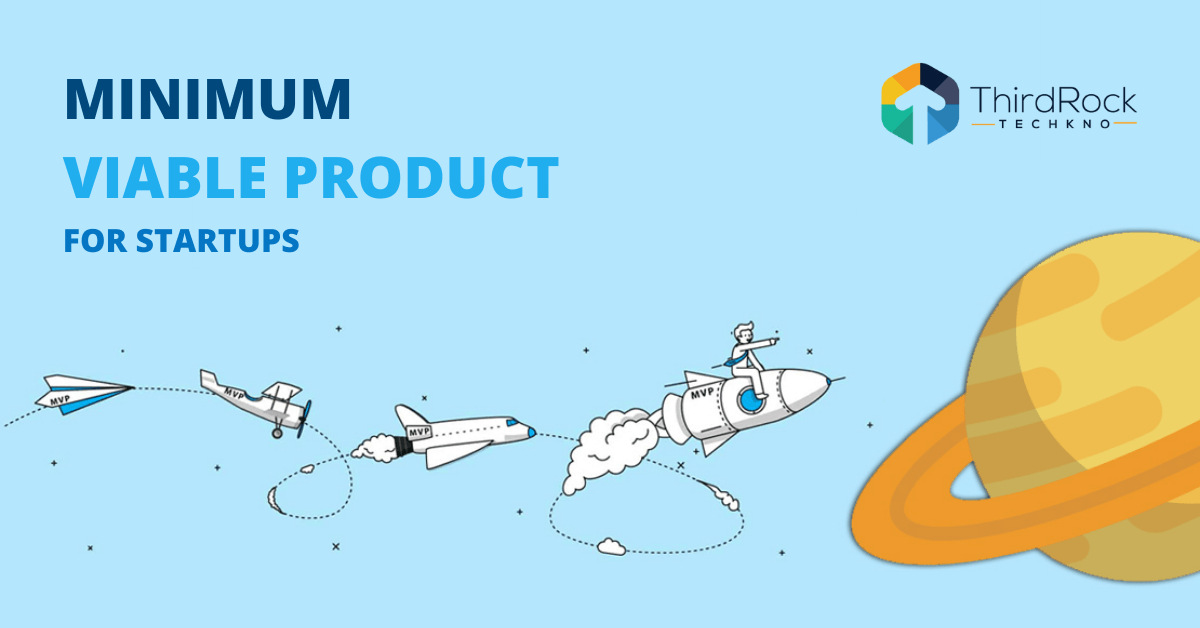
Every year, there is a surge in the number of startup companies with promising ideas and caliber. But not all of them make the grade in today’s highly competitive world. Among others, a high development cost often leads businesses to go bankrupt even before they can get their first hundred customers. Hence, it's imperative to cut down on costs at least until you begin making profits. In this guide, I explain how MVP for startups reduces development costs. Additionally, I will also share how to build an MVP the right way so as to achieve your business goals.
Common Reasons Why So Many Startups Fail
According to a study conducted by CBInsights, about 70% of tech startups fail, usually after 20 months of successfully raising funds.
Another CBInsights research cited the following as the most common startup failure reasons:

Image source: CBInsights
No demand for the product in the market
Many startup founders often miss considering their target audience’s point of view during the process of giving their idea a concrete form. Their untested and invalidated endeavor consequently leads to a product that fails to attract the customers or has no market demand whatsoever.
Overbuilding the product
A startup may also collapse if it fails to deliver the product at the right time and instead diverts resources into overbuilding the initial product. This leads to running out of cash in the very early stages of business. In essence, a startup loses the market to its competitors if it does not immediately address and solve the customers’ problems
MVP For Startups- The Importance of Starting Out Small
Almost every successful startup began its journey as a small scale business with a consumer-centric approach. These companies started out by identifying the core problem faced by potential customers and focussed on serving the primary needs on a small scale before making it big in the market. MVP for startups started gaining tractions when the ecosystem recognized the value of starting out small.
Incidentally, Go-Globe’s latest data states that 74% of high growth internet startups are prone to failure because of premature scaling.
On the other hand, startups with a systematic expansion strategy perform 20x better.
If Uber had started out as a full-fledged enterprise, it wouldn’t be the giant it is today

Uber Technologies was founded as a local cab service known as UberCab and was based out of San Francisco, USA. It was primarily focused on reducing the direct cost of transportation incurred by customers.
However, it was during the MVP testing stage that the company came up with an idea to address the needs of both the customers and the drivers. In this way, the market insights gained through the MVP approach helped UberCab transform into what we know as Uber today.
Lessons from Airbnb: if you are building something that doesn’t already exist, you must test it before investing in it
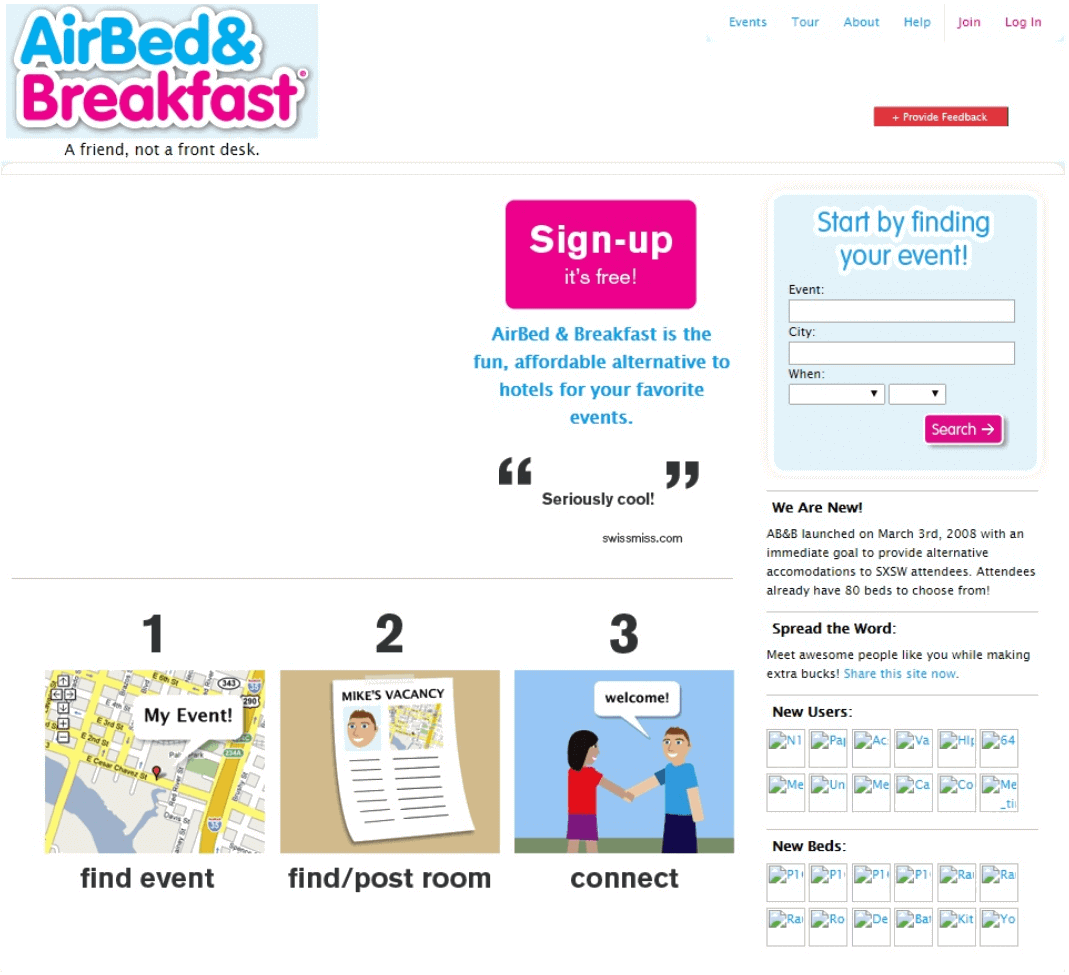
Airbnb has gained a lot of traction from people all over the world with its innovation in the tourism industry. But not many people talk about how it actually began and grew.
The idea was conceived when the would-be Airbnb co-founders, Brian Chesky and Joe Gebbia, were faced with the problem of paying rent and a lack of cash. As a means to solve this problem, they decided to share the apartment with some of the attendees of a conference held in their hometown at a minimum charge. The attendees loved staying with them and gladly paid a decent amount of money.
This incident sparked an idea in the minds of the co-founders. They realized that often, people love to stay at a local, homely place when they visit other towns for leisure or business. To test their assumption, they built an MVP called airbedandbreakfast.com.
They launched the website with minimum required features and some photos of their apartment. The website blew up after a while as more people started demanding renting services.
In this way, the minimum viable product approach helped Airbnb to test market demand before they went all-in with the investment.
MVP For Startups: How it Helps Reduce Development Costs
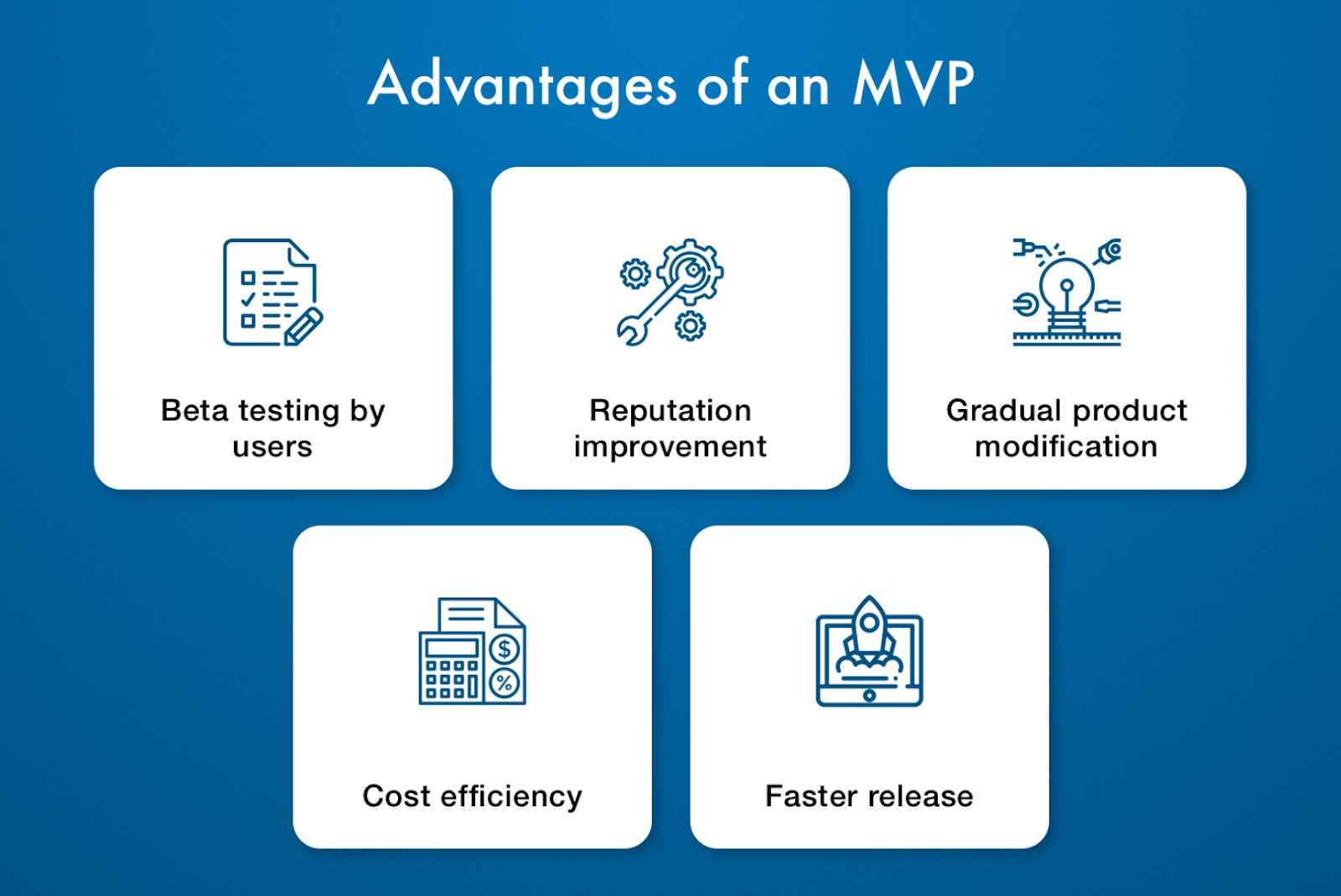
A minimum viable product can impact your business in lots of positive ways. One of the most important benefits of MVP for startups is a reduction in development costs. For all the entrepreneurs, keeping the costs in check presents a major challenge as their creative abilities are limited by financial resources.
An MVP saves you from making disastrous investments in products with no market demand
An MVP is a very useful tool for verifying whether your idea is suitable for the current market situation before you decide to invest all of your time and resources into it. The performance of your MVP determines whether you should move forward with your project. This can save you from potentially incurring a major financial loss. Therefore, the MVP development cost is a fruitful investment in reducing startup development costs in the long run.
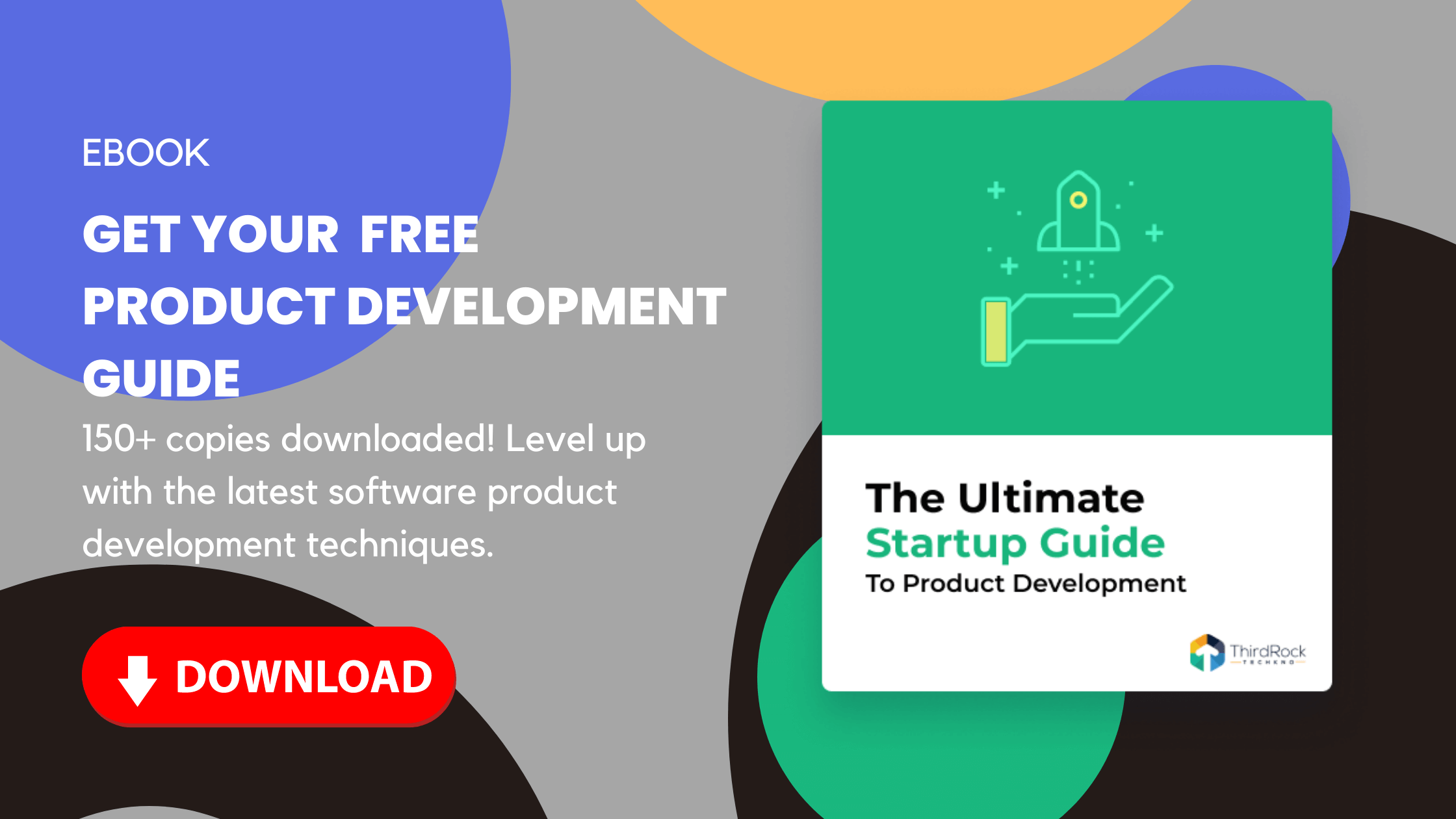
MVP development facilitates constant feedback and hence, helps you improve your offering
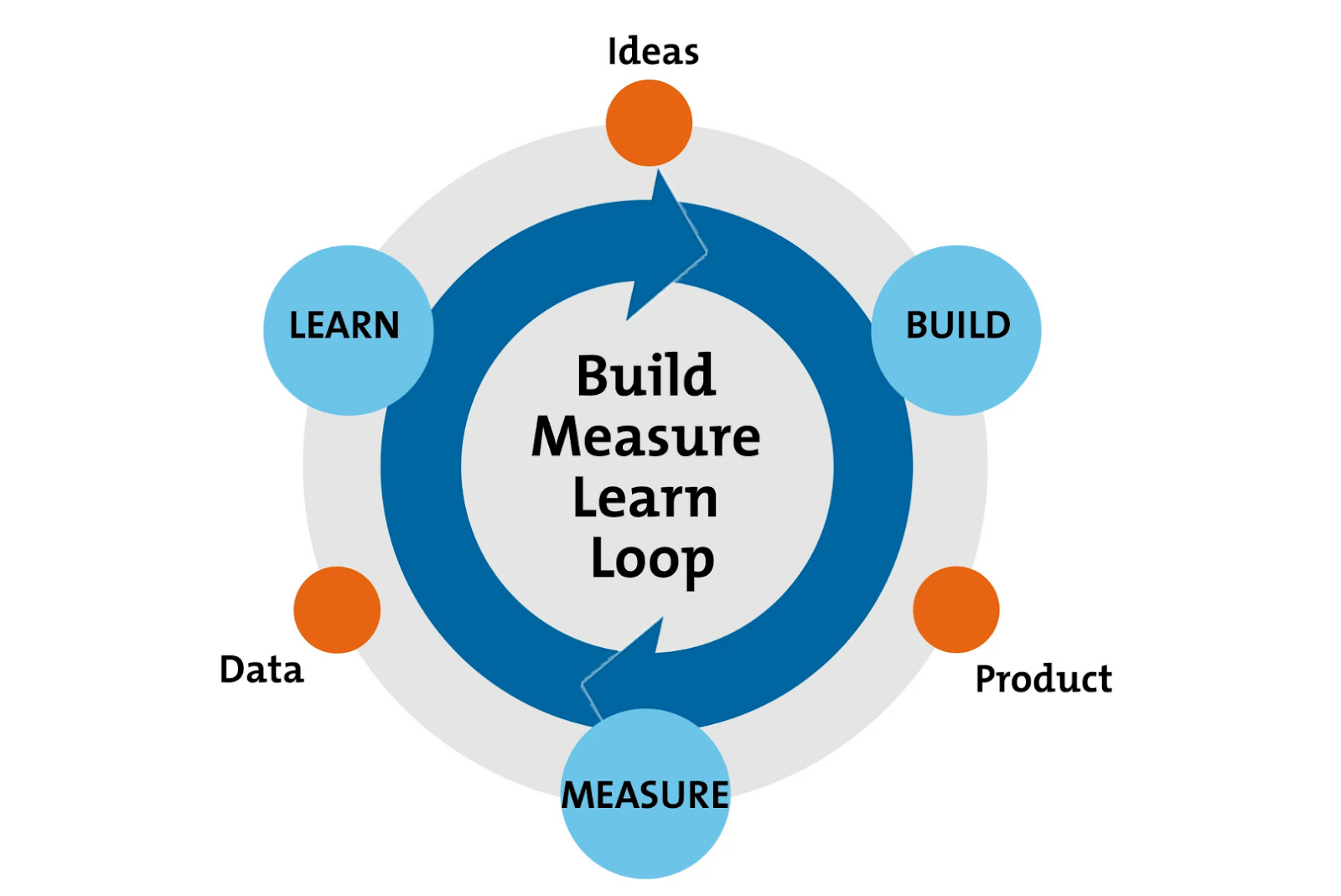
The whole process of MVP development enables a startup to access customer-related data through a constant feedback loop. In this way, an MVP facilitates the communication process between the startup and its customers.
Constant customer feedback allows you to build a product that caters to the specific needs of your users. Once you identify the core features, you can develop a quick MVP without the nonessential functionalities that cost extra.
Moreover, the customer insights are a valuable input for further developing and enhancing your MVP. Revised iterations of a mobile app or web app help you understand what works for your users and what doesn’t. Most importantly, it helps you understand how you can further improve customer experience and make your product more profitable
All of this information is then used as an input for building the final version of the product. Thus, an MVP helps startups save a lot of money in the form of customer support, software upgrades, and so on.
When You Should Go For MVP Development For Your Startup
Having discussed the “WHY” aspect of MVP, it is now time to look at “WHEN.” Generally, a startup develops an MVP for testing and gaining customer insights. However, there are certain circumstances (other than testing) where MVP for startups has significant benefits. Considering how an MVP for startups helps reduce development costs, here are top scenarios wherein an MVP can be of great use for your startup
- When you want to review a project concept in action to launch your startup
- When presenting your business plan to investors. Raising capital requires you to win the confidence of the investors which is only possible through a working demonstration of your product.
- When the available amount of time or financial resources for app/web development is limited.
- An MVP can also be helpful in resolving several internal business issues such as a common platform for storing and sharing of administrative information.
How To Build An MVP For A Low-Cost Yet Successful Startup Launch

Being a creator and a visionary, it is your responsibility to educate the target audience about your digital product. The users need to have a clear idea about how your startups will tackle their problems and what makes it stand out.
Broadly, the following steps help you build a cost-efficient MVP for your startup:
1. Define the problem your product aims to solve and do it as clearly and specifically as you can.
If you manage to create the right problem statement, your solution will be very likely to solve the problem.
2. Create a buyer persona of your target audience. This involves identifying the people at the intersection of both the problem and the solution.
You must know how old your potential customer is, where he resides, how much money he makes, and how often he is likely to buy your product.
3. Find the most basic possible solution that will solve the problem and that your potential customer will buy.
Because you are building an MVP to test your idea, you don’t want to invest in extra features unless the market demand is verified.
4. Build the MVP with the core functionalities and test various pricing models while you are at it.
Use various MVP testing strategies to validate your idea both in terms of market demand and what appeals to your users the most. Keep reiterating your MVP until you reach the sweet spot of being a user favorite product that makes profits.
Let’s look at an example: Suppose your objective is to build a fully compatible mobile app for the clothes renting business. You can build a primary version of your app by integrating features such as pictures of clothes, size, and rent costs. Based on customer reviews, you can further develop your app by adding filters for gender, the occasion, material of the cloth, payment options, and so on.
How To Test An MVP: 5 Proven Strategies
Read More
After MVP development, prioritizing features is the next most impactful factor in your startup’s success
The final product often contains a large number of features with varying complexity and they need to be prioritized. You can choose any method(s) to segregate the features of your app as per their advantages. These include customer feedback through polls, personal interviews and social media, competition analyses, A/B testing as well as beta testing to engage the early users.
Use the following features prioritization practices to build the right MVP for your startup and reduce development costs:
1. User scenarios and user stories to narrow down vital features
Basically, user scenarios basically show the reasons why a user should opt for the product and the purpose behind it. User stories typically define the app goals, who the customers are, how they will interact with the product, etc. This serves as a basis for you to prepare a list of the most pivotal features.
2. Kano Methodology to measure user satisfaction
The Kano model, as developed by Professor Noriaki Kano, helps in measuring the level of customer satisfaction. The method is used to determine whether the users are indifferent, happy, or dissatisfied with the product and its functionalities. The model delineates 3 main components of the quality profile: Expected, Basic, and Attractive.
3. MoSCoW Analysis to classify the features on the basis of their importance
Using the MoSCoW analysis method you can classify the tasks and features based on their priorities. They are generally sorted into the following groups: Must Have, Should Have, Could Have, and Won’t Have. This method requires you to gather user feedback, identify the complexity of features and other factors.
4. Cost vs Value Approach to measure the ROI derived out of each feature
The objective of this technique is to sort features based on two parameters – value and cost of development. Functionalities with the best ratios will be graded highest. However, this method imposes the difficulty of measuring the real value of the product. Instead, you can measure the reaction of the users, opinions of the focus group, etc.
Reduce Startup Development Costs Even Further: Outsource!
Most startups give immense significance to the MVP development process and they are absolutely right in doing so. A minimum viable product has the potential to make or break your business. That’s why a lot of the startups are uncertain about outsourcing MVP development as they have security and cost concerns.
However, if you know how to find the right outsourcing partners, you are in for a lot of benefits.
Benefits of outsourcing MVP development
1. Specialization:
Outsourcing presents you with an opportunity to work with top-notch specialists across the globe. There are several outsourcing companies that can help you find an entire team of experts. This can massively boost the performance of your product and your MVP.
2. Cost-Effective:
Outsourcing actually saves your business from incurring additional costs. You can outsource the development of a feature-rich MVP to a team of experts at the same cost as hiring an in-house developer.
3. Technical Consultation:
Outsourcing development agencies are equipped with developers who have years of experience and excellent technical knowledge. These experts are able to work around your specifications and add real value to your product.
4. Better Turnaround:
Through outsourcing, the development process is distributed effectively thereby leading to a faster time-to-market.
5. Focus on the Business Side:
Hiring an agency for MVP development helps you focus better on other aspects of the business such as marketing and administration as you don’t have to worry about recruitment or training.
When Should You Hire Dedicated Developers for Your Project
Read More
The Bottom Line
In a nutshell, an MVP launch is the most appropriate model for entrepreneurs to step into the world of startups. MVP for startups not only helps reduce development costs, but it also enhances your product offering. Outsourcing MVP development enables you to shape your idea with the help of global experts. In addition to being cost-efficient, outsourcing also helps you find the best possible team that understands the market and knows how to do things right.
Build Your MVP The Right Way
We specialize in minimizing development costs and prioritizing features that increase customer acquisition.
Get a free cost estimation for your project

